- International

Hawaii's Kilauea volcano spews lava everywhere
By Veronica Rocha , Meg Wagner and Brian Ries, CNN
Helicopter video shows the exact spot lava is flowing into the ocean
Officials with US Geological Survey flew a helicopter over Kīlauea Volcano’s Lower East Rift Zone to spotlight the spot where hot lava flows into sea water, which is producing that dangerous laze plume we previously warned about.
(In a notable understatement, the USGC crew says " videomaking is not easy under these conditions ," and they "appreciate your understanding and acceptance of video length and quality.")
Another explosive eruption at Kilauea summit happened today
An explosive eruption occurred at Kilauea summit early Tuesday morning at approximately 3:45 a.m. local time, according to the Hawaii County Civil Defense Agency.
The resulting ash cloud rose to 8,000 feet and drifted southwest, according to the United States Geological Survey.
Here's how residents in the area were told to protect themselves from the falling ash:
The danger from this eruption is ash fallout. The major response is to protect yourself from fallout.If you are at home, stay indoors with the windows closed. Turn on your radio and listen for updates from authorities.If you are in your car, keep the windows closed. Ash fallout may cause poor driving conditions, due to limited visibility and slippery driving conditions. Drive with extreme caution, or pull over and park.After the hazard has passed, do check your home, and especially your catchment system for any impact that may affect your water quality.
More eruptions and earthquakes are possible
From CNN's Holly Yan

The Kilauea volcano erupted at least twice this weekend -- at one point launching a cloud of ash up to 10,000 feet high .
"These eruptions caused a 5.0 magnitude and a 4.9 magnitude tremor at the summit," CNN meteorologist Haley Brink said.
"Additional explosive events that could produce minor amounts of ashfall downwind are possible at any time."
Since Kilauea's massive eruption May 3, Brink said, about 2,250 earthquakes have struck on or around Hawaii's Big Island.
As the Earth keeps shaking, liquid fire keeps flowing.
Lava is flowing into the ocean and creating a dangerous gas plume called "laze"

The Hawaiian Volcano Observatory reported that two lava flows are entering the Pacific Ocean, which has created a potentially deadly "laze hazard."
Access to the area is prohibited. Residents are being told to stay away from any ocean plume "since it can change direction without warning," and the U.S. Coast Guard is enforcing a 300-meter "standoff zone."
So what's " laze "? Here's how the USGS describes it:
When molten lava flows into the ocean, it reacts vigorously with sea water to create a different type of gas plume that results in hazy and noxious conditions downwind of an ocean entry. Referred to as a "laze" plume (for a blending of the words 'lava' and 'haze'), it forms through a series of chemical reactions as hot lava boils seawater to dryness. The plume is an irritating mixture of hydrochloric acid gas (HCl), steam, and tiny volcanic glass particles.
If anyone comes in contact with the gas plume, it can cause skin and eye irritation, as well as breathing difficulties. It can also be deadly.
The USGS attributes two deaths to laze in back in 2000, when the badly burned bodies of two hikers were discovered near a lava entry point in Hawai‘i Volcanoes National Park. Both had died of pulmonary edema caused by the inhalation of steam.
"They unwisely accepted a risk by choosing to enter an area the National Park had closed because of known -- and posted -- eruption hazards," USGS said.
What the fissures look like from an airplane
A USGS Volcanoes airplane flew over a few of the fissures that are currently spattering lava in in Kīlauea Volcano’s Lower East Rift Zone.
The photos, which were shared on Facebook, show just how close some of the homes came to being swallowed by lava flows.
"Field crews are on site tracking the lava flows and spattering from multiple fissures as conditions allow," the agency said.

Yes, the lava really is that orange
CNN's cameras are pointed right now toward the huge fountain of lava spewing from the volcano on Hawaii's big island.
Here's what it looks like behind the scenes.
What it's like to live on Hawaii's big island right now
From CNN's Stephanie Elam
Between the flowing lava and toxic gas that are forcing evacuations, the Kilauea eruption feels like a never-ending emergency for the people who live in the Puna district on Hawaii's big island.
Evacuated residents are allowed into the neighborhood to check on their homes for a period each day — 7 a.m. until 6 p.m. — conditions permitting. For some, it's a chance to chart the lava's progression and to see if any new fissures are opening in the ground near their homes.
Read more about the residents here .
Lava reaches geothermal power plant
Lava from Fissure 22 near Kilauea Volcano crossed onto the Puna Geothermal Venture (PGV) property Monday afternoon, according to Hawaii County Civil Defense.
Officials have taken the first step in fending off potential explosions or release of toxic fumes by initiating a process called “quenching,” according to Hawaii Emergency Management Agency spokesperson Thomas Travis.
Quenching begins with filling underground wells with cold water.
“The weight of the cold water sitting in the long pipe is sufficient, that instead of water entering the bottom of the well, cold water exits the bottom of the well," Travis said.
Travis also said multiple proposals have been made to plug the wells, including filling them with mud, and capping them with iron plugs.
PGV, located in the Kilauea East Rift Zone, is a geothermal energy conversion plant that generates electricity which is then sold to Hawaii Electric Light, according to the energy provider’s official website.
Please enable JavaScript for a better experience.
- Middle East
- Global development
La Palma: drone footage reveals massive river of lava – video
Drone footage surveying the Cumbre Vieja volcano shows a massive river of thick lava flowing towards the Atlantic Ocean. Approximately 7,500 people have been forced to leave their homes since the Cumbre Vieja began erupting more than a month ago. Scientists say the eruption could go on for three months
- Dogs trapped by La Palma eruption ‘saved by mysterious gang’
Source: AP, Reuters
Fri 22 Oct 2021 11.29 BST Last modified on Fri 22 Oct 2021 12.38 BST
- Share on Facebook
- Share on Twitter
- Share via Email
Most popular
- ENVIRONMENT
Scientists found life in a volcano’s ‘lava tubes’—life on other planets could be next
A Canary Islands volcano pushed rivers of molten lava through the earth. Now scientists and explorers trek through the cooling underground, looking for insights into life on this planet—and perhaps on others.
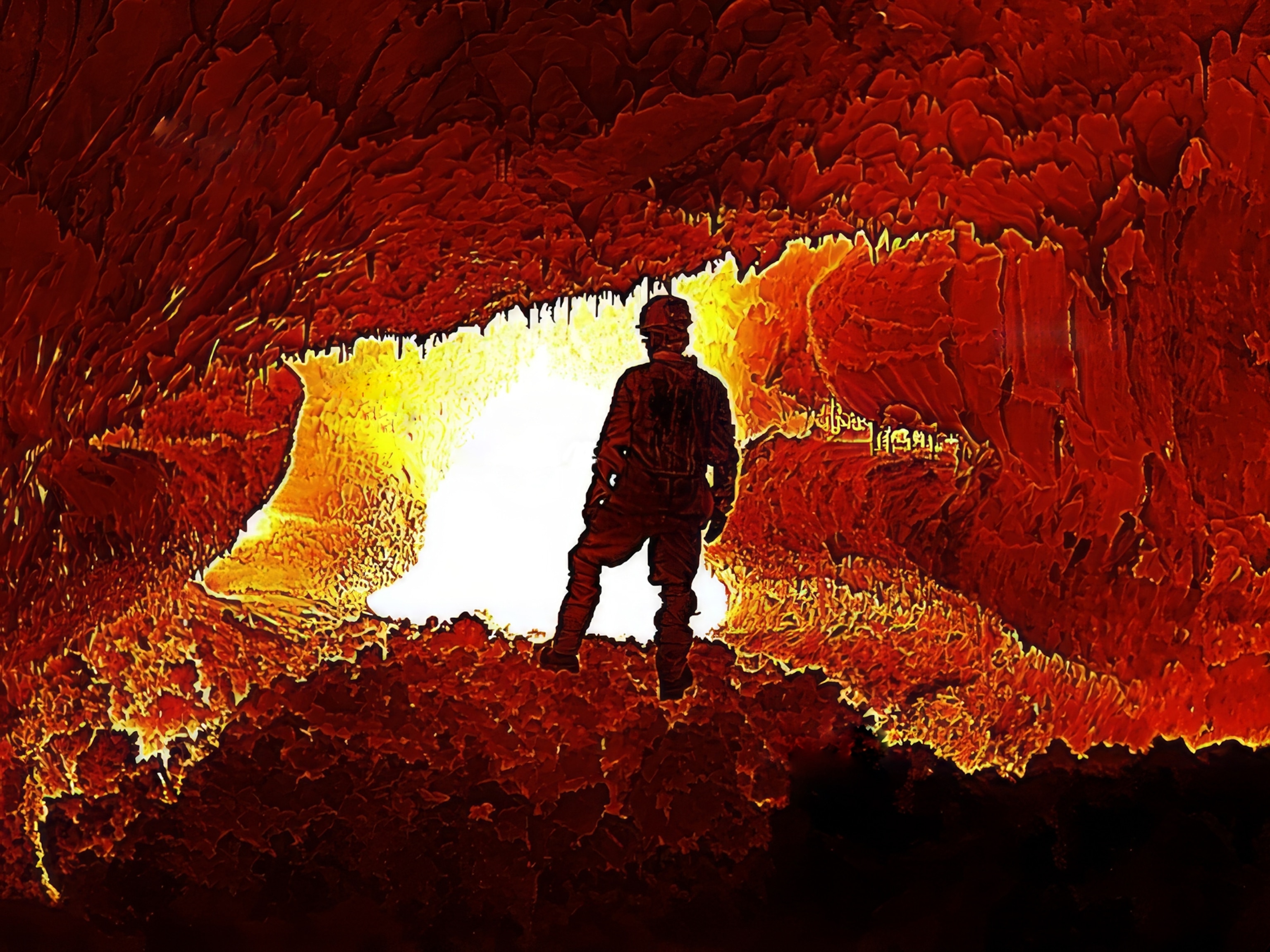
We could be on another planet.
A craggy, hostile surface stretches as far as the eye can see, framed by slopes of black ash. These are the new lava flows on La Palma, in the volcanic Canarian archipelago, off the coast of Morocco. They appeared in the fall of 2021, when, for three months, more than 50 billion gallons of molten rock erupted from the island’s Tajogaite volcano.
Transit through most of the lava field is still reserved for scientists and environmental officials. I’m accompanying Octavio Fernández Lorenzo, vice president of the Canary Islands Speleology Federation. Alongside researchers from the Geological and Mining Institute of Spain (IGME), Fernández is responsible for exploring and surveying the tunnels that lava left in its wake. Known in most scientific literature as pyroducts or lava tubes, they have a more poetic name here on La Palma: caños de fuego, fire pipes.

Fernández hands me a helmet, checks our water supply, and heads toward a white fence where a sign warns us not to cross. The road that brought us to this place cuts off abruptly and disappears under the blanket of lava. It feels as if we’re abandoning civilization.
( Lava built this island—then entombed towns in stone. )
Fire pipes can be found almost anywhere on the planet where there is, or has been, volcanic activity. In contrast to typical caves, formed over millions of years, these cavities are made in a geological instant. But not all volcanoes create lava tubes. The eruption must be long enough to expel adequate lava. That lava must be hot enough and composed of the right materials to remain fluid. And it has to descend a slope, at the right speed.
For Hungry Minds
At around 1800 degrees Fahrenheit, pahoehoe —“smooth” in Hawaiian—lava can flow. “It’s the same word used to define a calm sea,” says Fernández. I can picture it quite vividly. A sea of incandescent, syrupy lava advances, spilling downhill. The outer layer cools on contact with the air and begins to solidify, forming a crust that will become the roof of the tube. The lava continues to stream, unimpeded for miles, under that thermally insulated cover. When the eruption dies down and the channels drain, the result is a subterranean labyrinth of hollow tunnels separated from the surface only by the volcano’s skin.
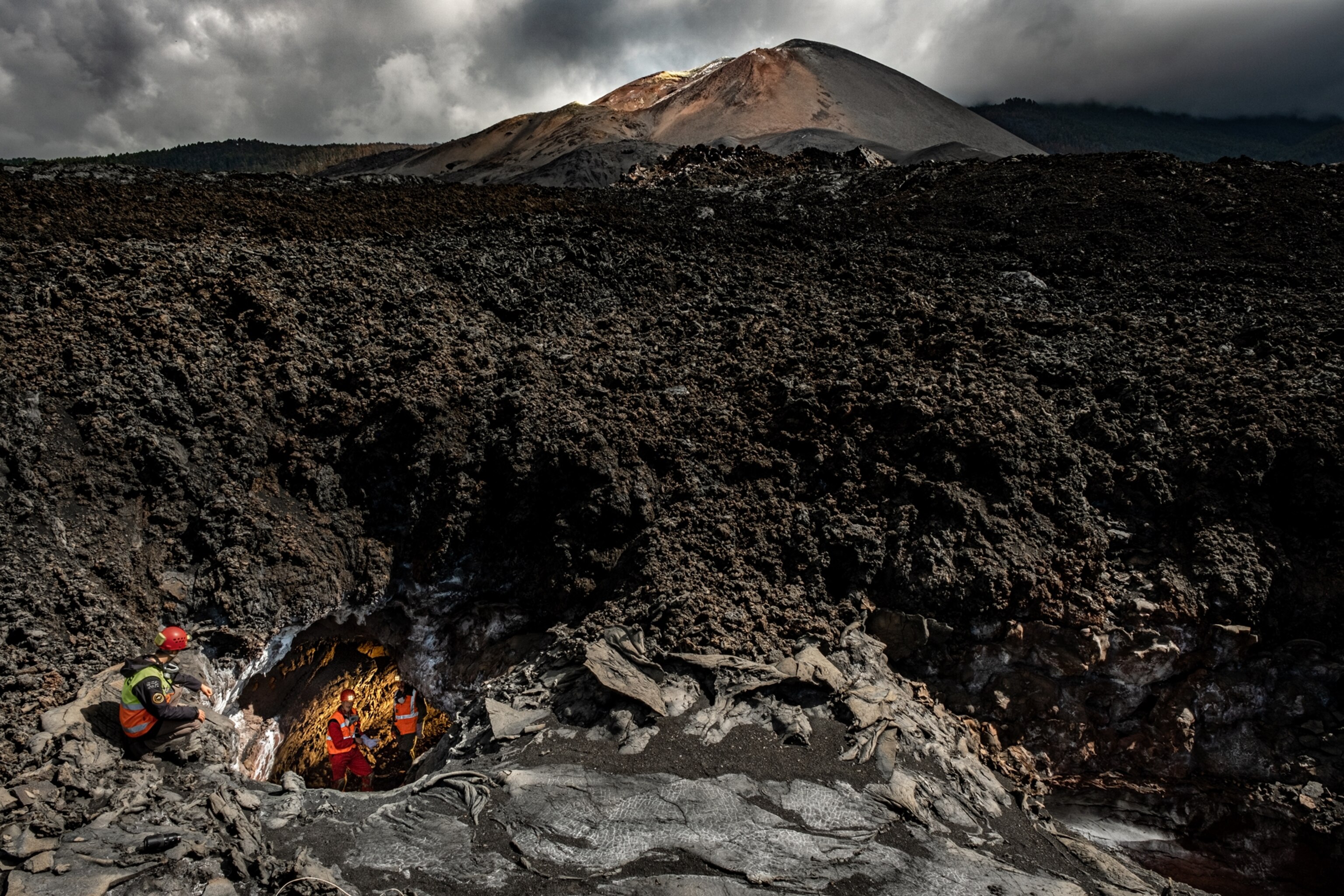
Leaning on a long white stick, which helps him move nimbly over hardened lava, Fernández looks a bit like a wizard from The Lord of the Rings. He studies our strides, as if he were the guardian of this newborn space. “Step where I step,” he warns. “This whole environment is extremely fragile.” It seems paradoxical that this imposing landscape, once capable of swallowing houses and banana plantations, could now be vulnerable.
Our hike to the tube takes an hour along a slope of sharp, living rock. This is aa lava, a Hawaiian term for “rough and stony” that many believe sounds like what someone walking barefoot on this jagged surface might say. Phrases from Hawaii’s active and intensely studied hot spots have been adopted by volcanology. Other languages have their own words that evoke images. For example, in Spanish this barren terrain is called malpaís, or bad land.
We walk slowly. Fernández picks up a tiny, immaculately white pyroclastic rock and hands it to me. It’s what researchers call restingolite, after the eruption in the La Restinga region of the neighboring island of El Hierro in 2011, when hundreds of pieces of whitish rock were found floating on the ocean, giving rise to a scientific debate that, unlike the eruption, has yet to die down. One hypothesis for their origin: They’re bits of the foundation on which La Palma grew, ancient ocean sediments from that two million-year-old seabed. Looking at the small fragment brings about an inexplicable feeling of vertigo. David Sanz Mangas, a geological engineer specializing in the study of extreme events and heritage at IGME, puts it this way: “It’s like looking out a window into our past.”
( Rediscover our coverage of the Canary Islands volcanic eruption. )
Barely a month into the eruption on La Palma, scientists detected lava tubes. They’re not obvious to the naked eye; drone imagery captured during the eruption helped predict their possible routes. One tube was discovered in June 2022, six months after the eruption ceased, as workers were starting to build a new road over the hardened flow. When they came across a cavelike space, they had to pause. And that was when Sanz, who had relocated from Madrid to the Canary Islands to study the eruption’s aftermath, joined the team and began exploring the newborn fire pipes of La Palma.
“Based on field data obtained in the Hawaiian archipelago, the place with the largest volcanic cavities in the world, we assumed exploration of the tubes could begin about two years after the eruption,” he says. But here “we saw that, with difficulty, it was accessible.”
Drones are crucial to fieldwork. “The first step was to begin a series of thermal flights that would monitor the open holes in the lava field,” he says. “And to start exploring them little by little.”

The so-called red tube is a product of the lava rivers that, three years ago, flowed down into the small town of Todoque. Today a pair of entrances about 200 feet apart allow air to circulate. “Instead of hot air coming out, the mouth sucks in fresh air from outside,” Fernández says. “This is the best laboratory we have right now to learn how the lava flows cool.” We turn our headlamps on, crawl in, and confront the surprising reddish color of the walls. On the ceiling we see dark brown lava stalactites hanging like droplets that solidified before they could fall and are now suspended forever. They look like melted chocolate.
Inside the tube, the air is cooler than the walls—anywhere from 120 to 210 degrees, according to a probe. We balance against these walls with our gloved hands as we move forward, step by step. The humidity and the mix of temperatures give the cave the pleasant sensation of a Turkish bath.
With a thermal drone, Fernández takes temperature readings. About a hundred yards in from the mouth, he tells us to stop: The heat is increasing significantly. Not far ahead, the tube narrows and exhales a temperature of more than 480 degrees. In the video feed, the air shudders like a mirage.
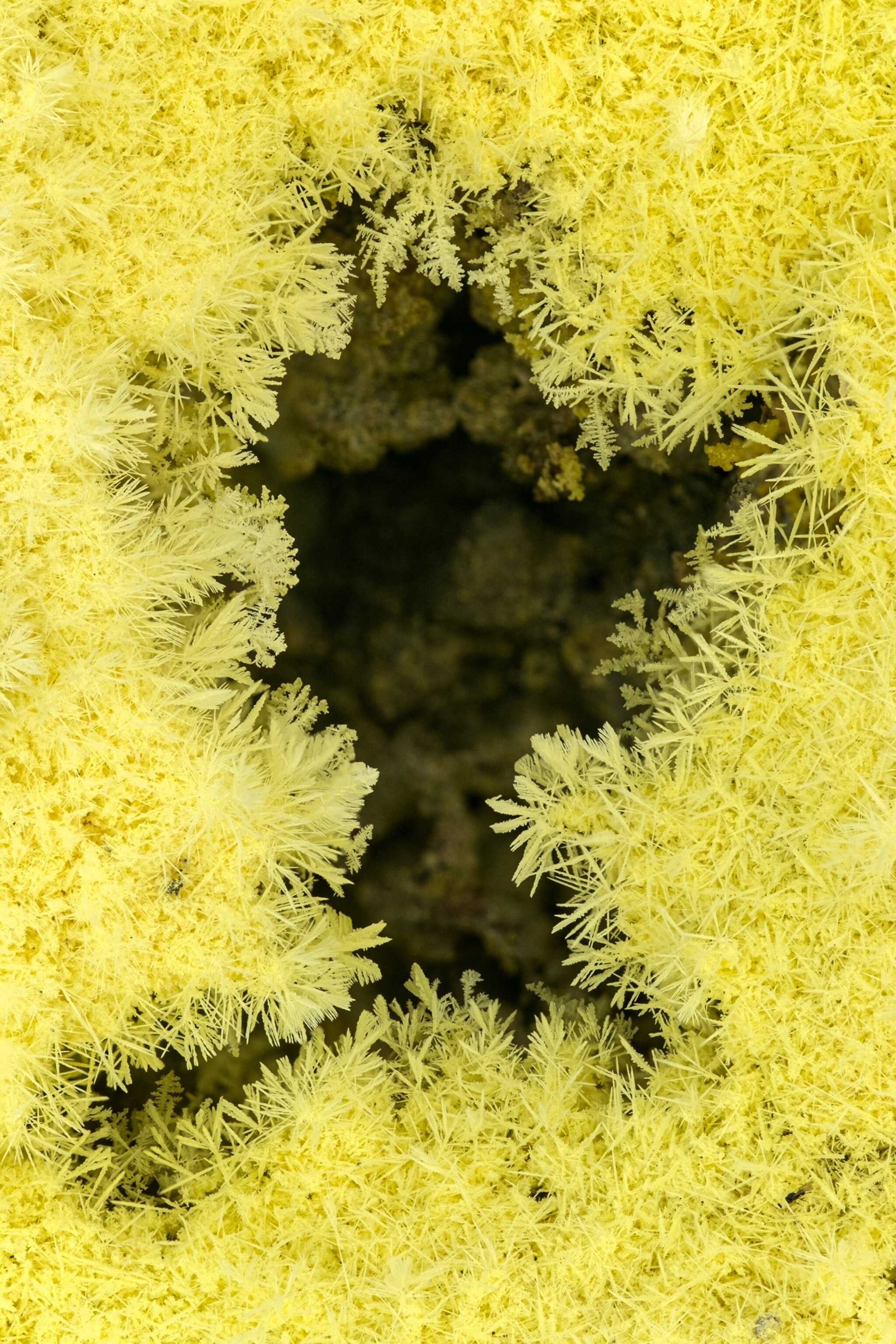
This mouth is just one of more than a hundred identified so far, mostly by drone flights overhead—though some remain too camouflaged to spot from the air. Just a tiny number have been explored. Openings are viable only if the temperature allows. In lava flows up to 65 feet thick, cooling can go on for two and a half years; at 150 or 200 feet thick, it might be 20 years.
( These crystal lava shards are ‘four-dimensional videos’ of a volcano’s underworld. )

You May Also Like
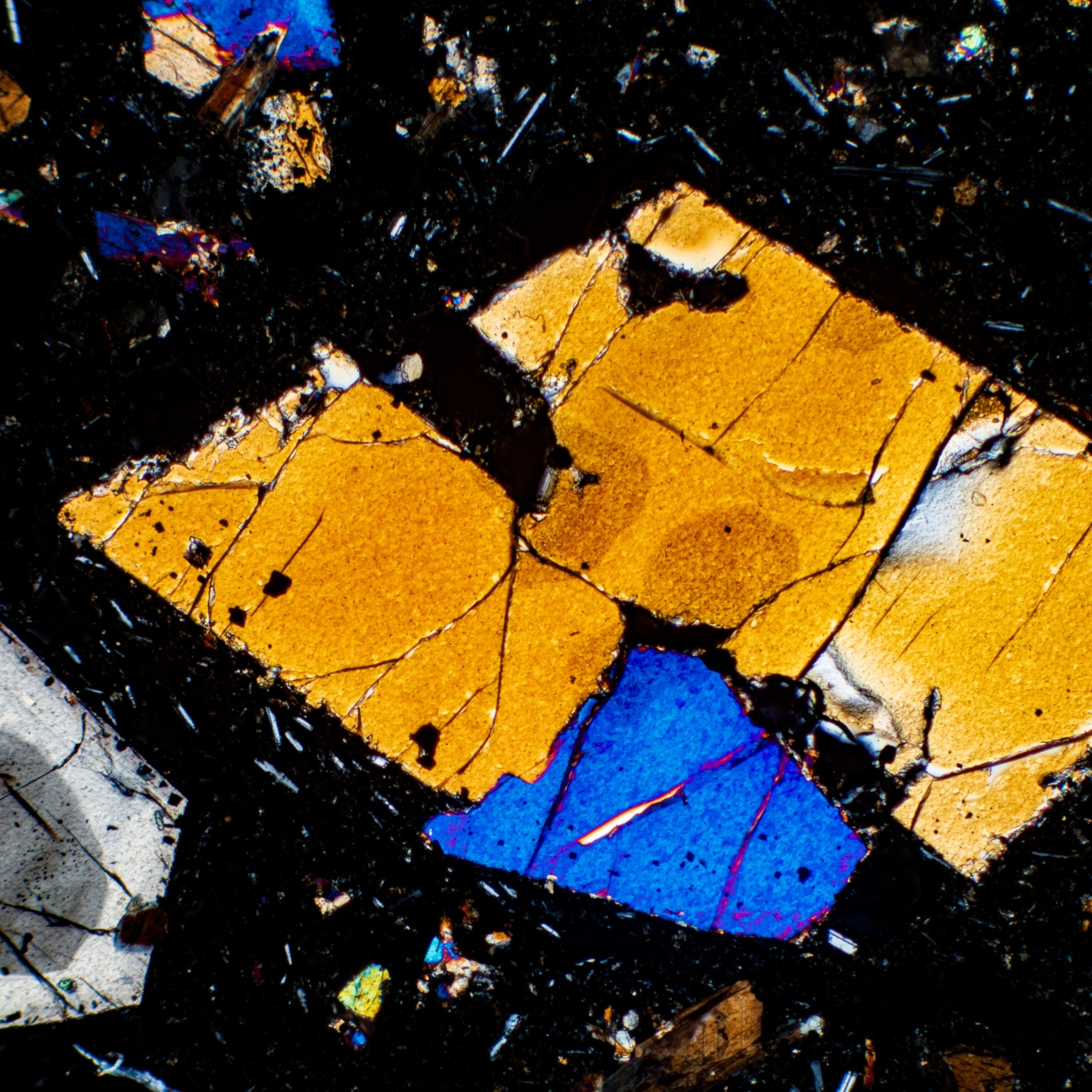
These crystal lava shards are ‘four dimensional videos’ of a volcano’s underworld
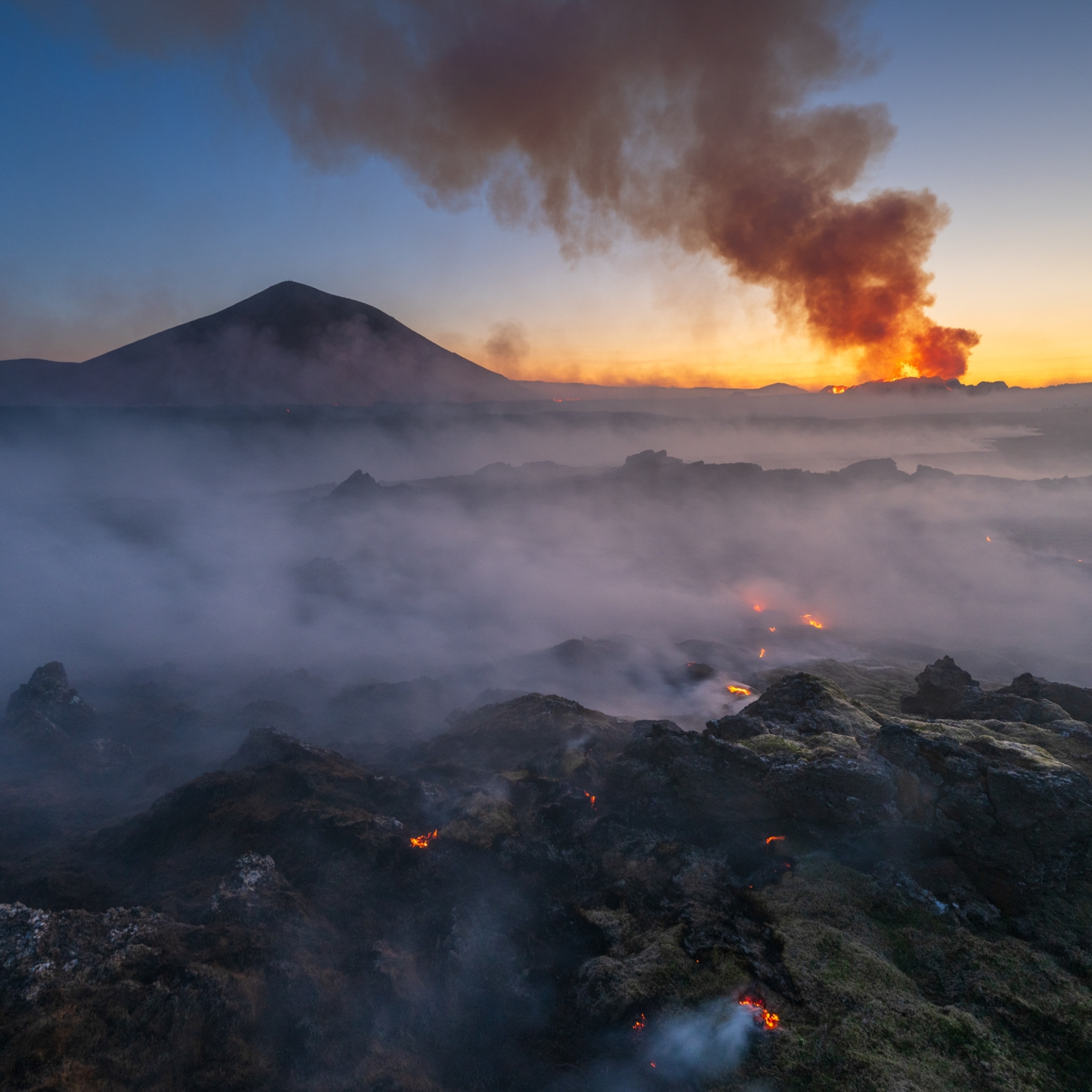
Volcanoes don’t just erupt on schedule—but they have been in Iceland

Iceland's latest eruption is quieting down—but the explosive upheaval isn't over yet
It’s too soon to predict how far these tunnels reach. Scientists believe that this network may be composed of up to three overlapping levels. Sanz thinks it could be the most extensive tube system in Europe. That title is currently held by the Viento-Sobrado cave system beneath Mount Teide on the neighboring island of Tenerife. With more than 11 miles of tunnels, it was considered the largest volcanic tube in the world for a brief moment until, in 1995, a man named Harry Shick found a cave entrance in his yard on the island of Hawaii. It would turn out to be the access point to more than 40 miles of tubes, branching out from the Kilauea volcano.
There is much to learn from these tunnels, and perhaps not just about our world. Ana Zélia Miller, a geomicrobiologist from Seville’s Institute of Natural Resources and Agrobiology, is the daughter of artists. The course of her life changed when her parents gave her a microscope at the age of nine. Since then, she has focused her lens on those small life-forms that go unnoticed by the human eye. Her first discoveries were made in La Palma’s fire pipes, studying their peculiarly gelatinous speleothems, or mineral deposit formations.
Miller’s research on extremophile species, especially bacteria capable of obtaining the energy to develop from inorganic matter, led the European Space Agency to recruit her for its Pangaea-X project. The mission was to train astronauts in the collection and analysis of microbial samples on the nearby island of Lanzarote inside a lava tube whose conditions appear comparable to lava tubes on the moon and Mars.
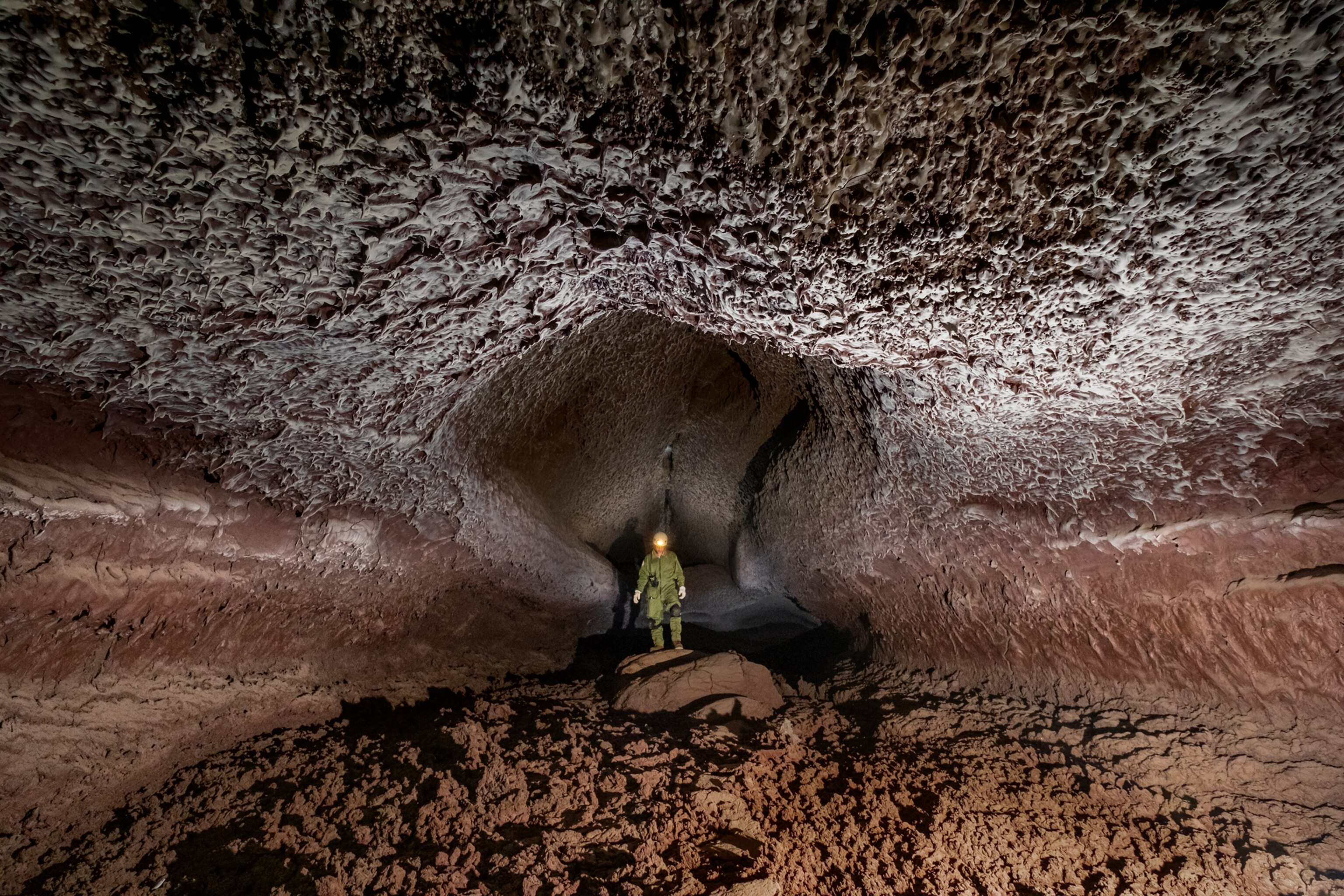
Since 2009, when a Japanese space probe discovered the Marius Hills Skylight—a possible entrance to one of the moon’s volcanic tubes—the scientific community has been studying the similarities between terrestrial volcanic tubes and their planetary counterparts. For Miller, the question is no longer if we will find life on other planets, but when.
“Martian and lunar caves differ greatly from ours in terms of environmental conditions and gravity, which affect their size and stability. However, their formation and surroundings have more in common with terrestrial ones than one might think,” says Francesco Sauro, a European Space Agency scientist and National Geographic Explorer. If there is, or has been, life in these otherworldly lava tubes, it could be microbial, as it is in the fire pipes of La Palma.
“The recent eruption on La Palma gives us a unique opportunity to learn about the pioneering microbiota in these newly formed lava tubes,” says Miller. The island’s volcanic tubes are already inhabited. Miller’s team has identified known bacteria as well as other life—belonging to the phyla Pseudomonadota and Bacteroidota—which could ultimately be identified as new species.
( Dramatic photos show the 2021 La Palma volcanic eruption. )
La Palma’s Volcano Route, an old hiking trail that reveals the island’s distinctive landscape, is open again. From there, a path, still carpeted with ashes, leads to another partially explored tube, known by scientists as hornito bonito —pretty little oven. We come across a group of tourists who have hiked to see the main cone of the volcano, recently named Tajogaite, “cracked mountain” in the island’s native language. The rest of the area requires accreditation, and even a gas meter and masks, because conditions can vary from one moment to the next.
The ash field is deserted, as unspoiled as the eruption left it, and covered with small craters. Each one houses a rounded stone, like an oyster with a pearl. The stones are viscous fragments spat out by the volcano, smoothed by friction with the air. Volcanic bombs, says Fernández. He takes one in his hands to show me and then puts it back in its place. They are part of this virgin landscape, at least until someone decides to start taking them as souvenirs.
“The ideal would be to create a network of marked and monitored trails so that everyone could enjoy this new geological richness, without damaging it and without encountering any risk,” Fernández says. He pays close attention to our steps and turns at any suspicious creak. The layer of hardened lava is a thin biscuit, not even two inches thick. Underneath there may be a bubble, a crack where the temperature can exceed 900 degrees.
The hornito bonito rises up like an artisanal oven or a sandcastle. “The hornitos are like mini-volcanoes,” explains Fernández. “This one was formed in just three days.” It appeared right above the north face of the volcano’s main cone, when a jet of lava shot a hundred feet into the air. As it lost strength, gases began to bubble up, expelling spatters that piled up until they formed a truncated, conical tower.
A nearby entrance is a huge hole that descends into the tube, giving an idea of the lava waterfall that must have circulated, the edges solidifying around it. A light white powder seems to settle on everything, condensing into tiny white stalactites, as thin as needles—researchers are still studying their composition. They are ephemeral minerals, doomed to transform and disappear with every drop of water. Maybe by the time we know what they are, they won’t exist anymore.
The earth here gives you a sense of reverence toward places touched by disasters. I turn my headlamp off to feel the darkness. The silence and the solitude are breathtaking. Eventually, we cross the lava field back to our cars. It’s raining, and the puddling water kicks up clouds of steam. Our clothes are soaked, but I don’t feel cold. Heat is still emanating from the living rock.
( Can tourism help recovery after a disaster? )
Related Topics
- VOLCANIC ERUPTIONS
- WILDLIFE CONSERVATION

Why Iceland's latest eruption may be the most dangerous in recent history

Startling volcanic activity has town in Iceland bracing for crisis
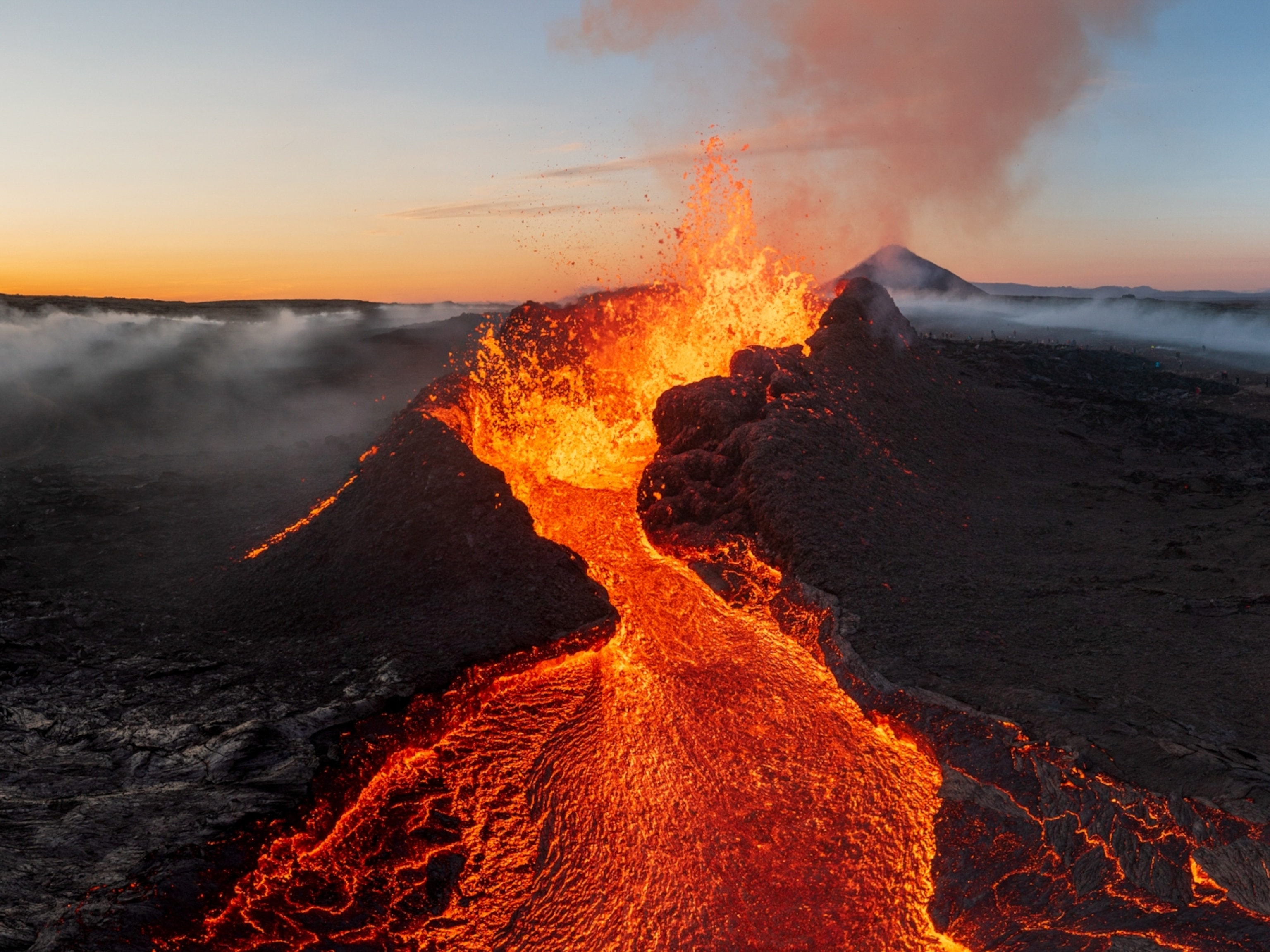
Iceland has entered a new volcanic era
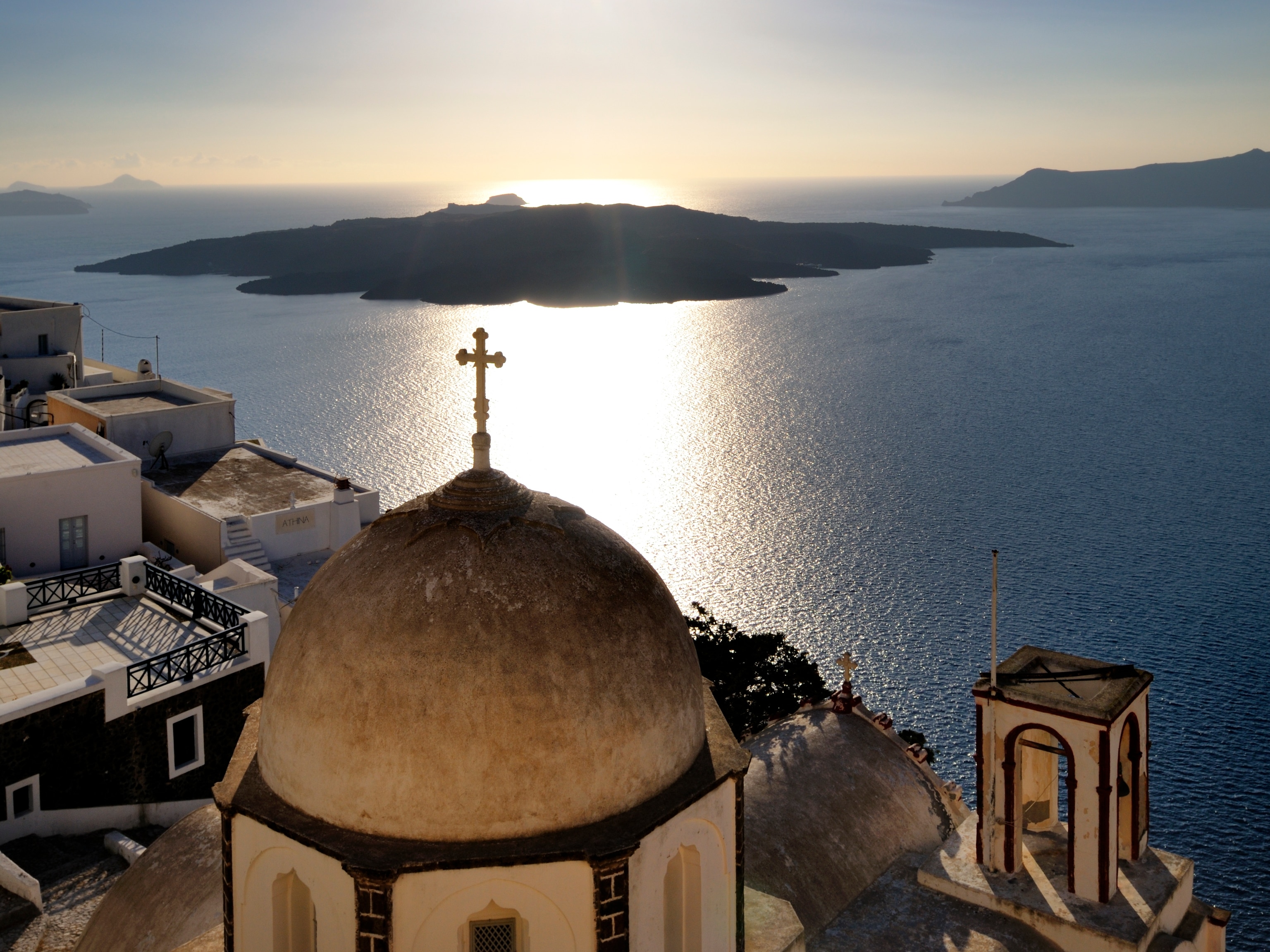
The island of Santorini is hiding an explosive secret
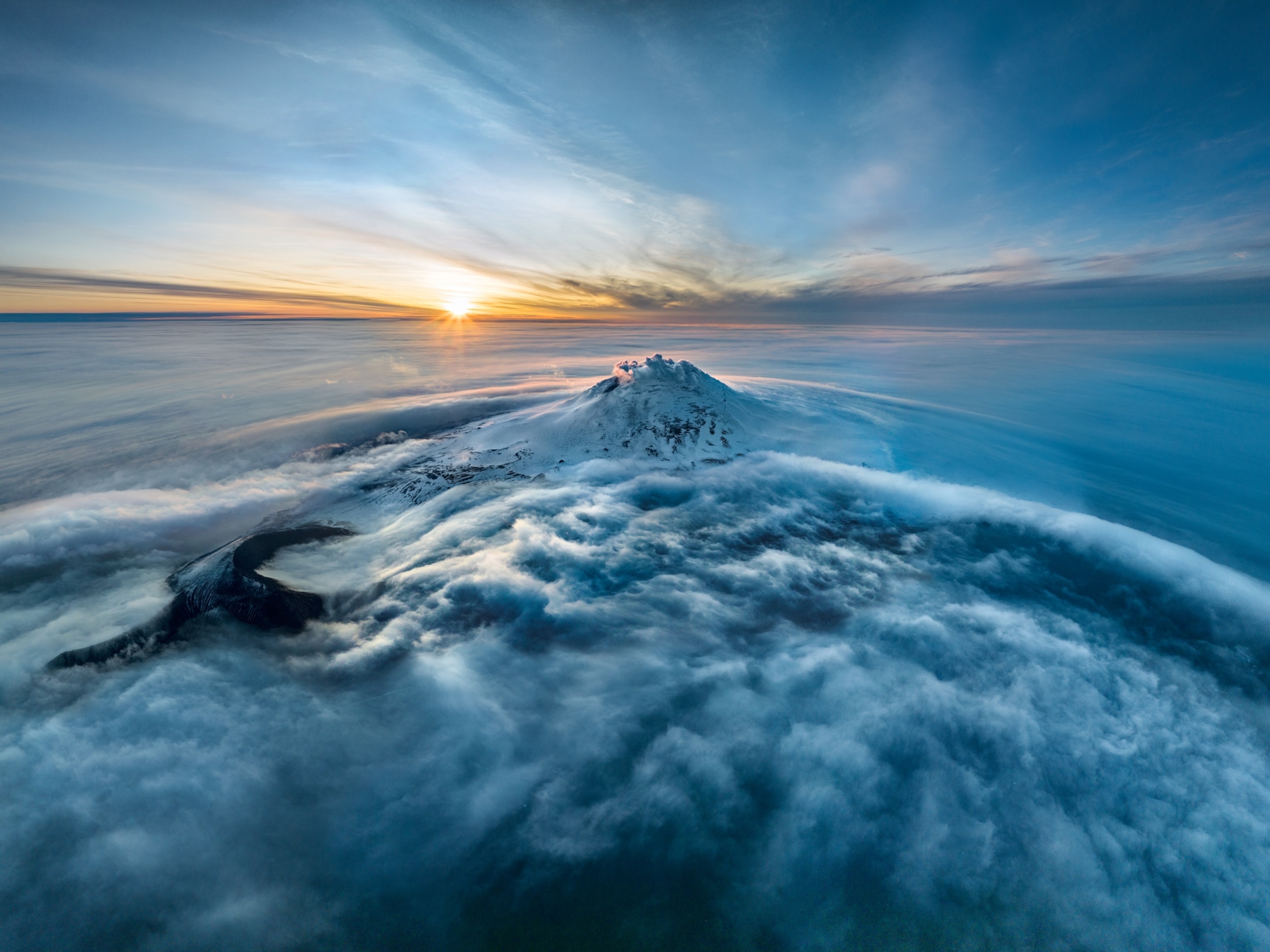
The world’s loneliest volcano may hold something truly rare. We went to find it.
- Environment
History & Culture
- History & Culture
- History Magazine
- Gory Details
- Mind, Body, Wonder
- Paid Content
- Terms of Use
- Privacy Policy
- Your US State Privacy Rights
- Children's Online Privacy Policy
- Interest-Based Ads
- About Nielsen Measurement
- Do Not Sell or Share My Personal Information
- Nat Geo Home
- Attend a Live Event
- Book a Trip
- Inspire Your Kids
- Shop Nat Geo
- Visit the D.C. Museum
- Learn About Our Impact
- Support Our Mission
- Advertise With Us
- Customer Service
- Renew Subscription
- Manage Your Subscription
- Work at Nat Geo
- Sign Up for Our Newsletters
- Contribute to Protect the Planet
Copyright © 1996-2015 National Geographic Society Copyright © 2015-2024 National Geographic Partners, LLC. All rights reserved
- Utility Menu
Department of Earth and Planetary Sciences
E1d1c96d5a69de8eba72ce00551b9ea1, have you ever contemplated how lava can travel such far distances.
a. So, maybe you haven’t thought about it. But after you see how quickly lava cools when exposed to air, you may wonder how some of the lava flows on Hawaii managed to travel for tens of miles before cooling. Most long flows self-insulate by forming lava tubes that allow the lava to remain hot and flow further.
b. 360 Video: 25—Thurston Lava Tube entrance (8/18/16) Thurston Lava Tube is just one of many lava tubes that have transported lava away from volcanic vents. Lava tubes are distinct from dissolution caves, which form from the removal of material. Lava tubes form during eruptions as the top surface of a lava flow cools more rapidly than the underlying lava, forming a crust. The crust insulates the lava underneath, allowing it to stay hotter and flow further. A lava tube cave is left behind when the lava drains. Collapses in lava tubes create skylights, like the one through which visitors enter Thurston Lava Tube.
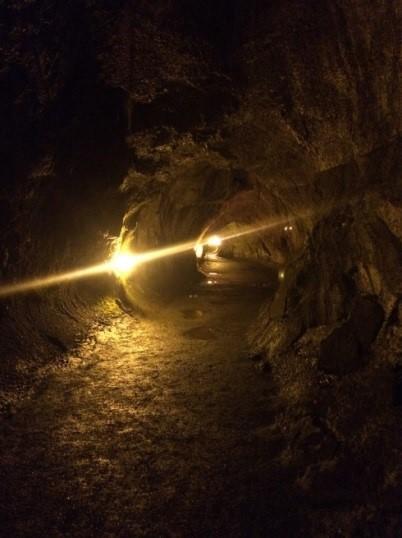
Figure 1: Thurston Lava Tube, in Hawaii Volcanoes National Park, is well-lit and large enough for visitors to walk through.

Figure 2: EPS students descend into Kaumana Cave, a lava tube near Hilo, Hawaii in August 2016.

Figure 3: After making their way through a dark lava tube with headlamps, students enjoy a skylight in Kaumana Cave.
Recent FAQs
- Have you ever hiked through a rainforest and pondered nutrient limitation?
- Have you ever wondered how stream water samples can tell you about erosion and climate?
- Have you ever felt the heat from magma beneath your feet?
- Have you ever wondered what comes out of a volcano (other than lava?)
- Have you ever wondered why there are different colors of beaches in Hawaii?

NASA Releases Incredible Video Of Reflective Lava Lake On Jupiter’s Hellish Moon
T here is really something special about sitting beside a lake on a calm day, enjoying the mirror-like reflection off of the water.
While that scene may be unforgettable, NASA has recently released a video that shows something similar from Jupiter’s moon IO… except instead of water, it’s lava!
The Jet Propulsion Laboratory (JPL) at NASA has taken data gathered from the Juno spacecraft, which performed flybys last February and December and used it to create a stunning rendition of what the lakes would look like in person.
IO orbits approximately 217,000 miles above Jupiter, which is only a little bit further than our Moon orbits Earth. One of the images generated by JPL illustrates what Jupiter would look like from the shores of one of these lava lakes.
Scott Bolton, the principal investigator working on Juno for NASA, talked about the volcanos and the lake that was observed.
“IO is simply littered with volcanoes, and we caught a few of them in action. We also got some great close-ups and other data on a 200-kilometer-long (127-mile-long) lava lake called Loki Patera.”
In addition to being captivated by the incredible beauty of the images, scientists are fascinated about this environment, which has some similarities to how obsidian glass was formed on Earth.
“There is amazing detail showing these crazy islands embedded in the middle of a potentially magma lake rimmed with hot lava. The specular reflection our instruments recorded of the lake suggests parts of Io’s surface are as smooth as glass, reminiscent of volcanically created obsidian glass on Earth.”
While it may sound tropical, you would not want to live there (or even visit).
IO has an average surface temperature of around -202 degrees Fahrenheit. The volcanoes on the moon, which feed this lake, can reach as high as 3000 degrees.
While we may not want to visit, we loved watching the video released by NASA’s JPL.
Check it out:
Pretty impressive!
If you thought that was interesting, you might like to read a story that reveals Earth’s priciest precious metal isn’t gold or platinum and costs over $10,000 an ounce!
Sign Up to receive the Twisted Sifters weekly newsletter for the best Internet culture news updates.
The post NASA Releases Incredible Video Of Reflective Lava Lake On Jupiter’s Hellish Moon first on TwistedSifter .


IMAGES
VIDEO
COMMENTS
Molten lava and volcanoes create some of the world's most mesmerizing scenery. Enjoy this 4k Scenic Relaxation Film of Iceland's newest volcano, Fagradalsfja...
This 4K travel guide is a perfect way to escape the hustle of everyday life and enjoy an incredible video of lava!!Welcome to the magnificent realm of lava, ...
06:00. Watch zoo animals react as totality passes over Texas during eclipse. 02:19. Iceland's Fagradalsfjall volcano erupted for the first time in 700 years this March. Months after it exploded ...
Lava Beds National Monument, in northern California, is an astonishing geologic marvel, where the largest volcano in the Cascades by volume ejected countless...
A spectacular "firehose" of lava has poured into the ocean at Hawai'i Volcanoes National Park. The explosions into the sea come at the Kamokuna lava delta, w...
Capturing the best moments as you travel towards new adventures! ️ ️Never miss any detail with the stunning LAVA Blaze Curve 5G! 📱 #LavaMobiles #ProudlyInd...
Backstage at the Miss USA pageant, Miss New York USA 2019 Florinda Kajtazi demos the new CHI LAVA Travel Iron. Pick up yours today at CHI.com.Buy the Lava Tr...
The power of CHI Ceramic infused with volcanic lava derived from lava rocks provides gentle consistent heat during styling. CHI Lava Travel Flat Iron: https:...
The park welcomed more than 1.8 million visitors in 2015, but only about 600 will get to venture inside Puapo'o in 2016. Most of the lava tubes in the park are closed to the public to protect ...
00:54 - Source: CNN. World News 16 videos. Lava spews from volcano in breathtaking video. 00:54. Kenyans collect what's left of their homes after flash floods. 01:28. Indian food delivery driver ...
Lava overflow: Lava crossed Highway 137 and entered the Pacific Ocean. Laze: The nasty product, a mashup of "lava" and "haze," forms when hot lava hits the ocean. It can cause lung, eye and skin ...
1:26. Drone footage surveying the Cumbre Vieja volcano shows a massive river of thick lava flowing towards the Atlantic Ocean. Approximately 7,500 people have been forced to leave their homes ...
May 01, 2024. We could be on another planet. A craggy, hostile surface stretches as far as the eye can see, framed by slopes of black ash. These are the new lava flows on La Palma, in the volcanic ...
Lava fountain and 'a'ā flow during Pu'u 'Ō'ō eruptive episode 21, Kīlauea Volcano, Hawai'i Lava type dictates flow shape and travel distance. Lava flows are streams of molten rock that pour or ooze from an erupting vent. Lava is erupted during either nonexplosive activity or explosive lava fountains.
But after you see how quickly lava cools when exposed to air, you may wonder how some of the lava flows on Hawaii managed to travel for tens of miles before cooling. Most long flows self-insulate by forming lava tubes that allow the lava to remain hot and flow further. ... 360 Video: 25—Thurston Lava Tube entrance (8/18/16) Thurston Lava Tube ...
The Jet Propulsion Laboratory (JPL) at NASA has taken data gathered from the Juno spacecraft, which performed flybys last February and December and used it to create a stunning rendition of what ...
About Press Copyright Contact us Creators Advertise Developers Terms Privacy Policy & Safety How YouTube works Test new features NFL Sunday Ticket Press Copyright ...
Unlimited VIEWS FOR LAVA TRAVEL 🔥 #youtubeshorts #shortsfeeds #ytshorts #shorts #short #viralsong